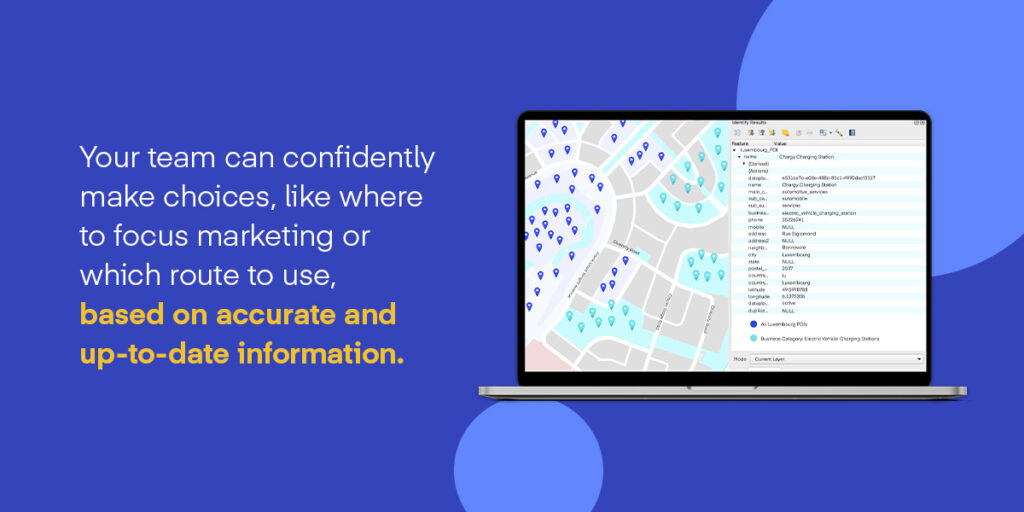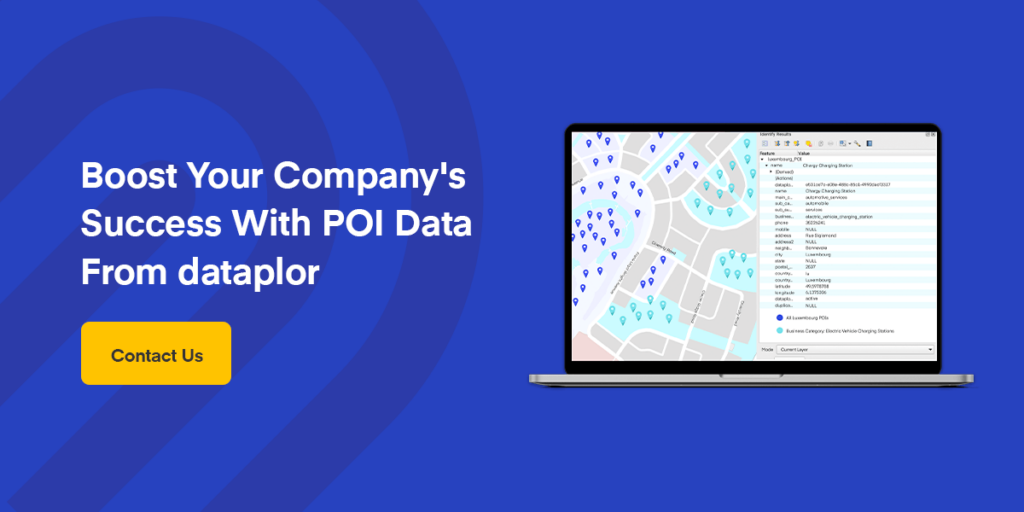
Third-Party Logistics POI Data Use Cases and Applications
Third-party logistics (3PL) businesses can reap many benefits from leveraging points-of-interest (POI) data. Industrial POI sites include manufacturing plants, warehouses, factories, distribution centers, power plants and refineries, among other facilities.
Access to comprehensive POI data can transform and revolutionize your daily operations, helping your business verify its partners and optimize its planning to streamline logistics. These insights also enable 3PL companies to cut costs and deliver outstanding customer service, supporting greater satisfaction and ultimately protecting your bottom line.
Explore some key use cases for POI data in the 3PL industry.
7 Use Cases for 3PL POI Data
Industrial POI datasets include a wide range of valuable insights, including but not limited to site coordinates, names, addresses, size, capacity and operational status. 3PL businesses and researchers can leverage this data to enhance operations.
Explore some key applications of POI data for logistics companies.
1. Optimizing Route Planning
Points-of-interest data is an incredible tool for 3PL companies looking to optimize route planning. Some of the key insights used to determine the most advantageous and time-saving route include:
- Customer locations.
- Traffic patterns.
- Traffic congestion.
- Delivery constraints.
This information enables your business to create highly efficient delivery routes. By carefully planning which directions your drivers take and finding the path of least resistance, your third-party logistics company can save significant costs thanks to factors like reduced fuel consumption and overall efficiency.
Plus, you can support shorter delivery times and boost customer satisfaction. Having POI data tools that provide updates in real time is also highly advantageous, especially for adjusting driving routes in response to changing road conditions to remain on schedule and combat frustrating delays.
2. Geofencing and Location-Based Services
Third-party logistics businesses can also utilize geofencing and location-based services to supercharge route planning and enhance operational visibility to support better overall asset and resource management.
Geofencing refers to a technology that allows users to establish virtual boundaries around physical locations. Your 3PL company can set up geofences around POIs, like your distribution center or warehouses, to track the following in real time:
- Shipments
- Arrivals
- Departures
You can leverage these tools to receive automated notifications based on driver proximity to different locations, increasing visibility into your operations. 3PL businesses can capitalize on location-based services powered by points-of-interest data to personalize and enhance customer experiences through:
- Tailored recommendations.
- Optimized service deliveries.
- Enhanced delivery insights.
- Targeted engagement.
3. Market Analysis
POI data is an incredible tool for third-party logistics companies looking to perform an extensive market analysis to learn more about current market trends, customer behavior and competitor strategies. Your business can use POI insights in its market analysis to:
- Identify market demand: Analyzing POIs can help you determine which regions feature the highest market demand for your logistics services.
- Assess competitor locations: Your business can utilize POI data to better understand competitive dynamics and establish strategies to differentiate your services from others in the market.
- Optimize network design: POI data can help your 3PL company determine the best transportation networks to supercharge efficiency, cut unnecessary costs and enhance service coverage.
- Demand forecasting: Historical points-of-interest data can offer a glimpse into the future, helping your business anticipate market demand for logistics.
- Expansion opportunities: POI data also give 3PL companies insight into opportunities for expansion based on factors like gaps in existing logistics infrastructure and historically underserved regions.
4. Risk Management
Third-party logistics businesses can also leverage POI data to boost risk management in their operations. Points-of-interest insights help companies identify, assess, manage and mitigate various risks.
By analyzing the regions around key POIs, your company can assess supply chain vulnerabilities and high-risk areas that could negatively impact operations, such as severe weather, high theft rates or geopolitical events.

Route optimization empowered by POI insights can help combat risks by ensuring your drivers take the safest routes based on real-time data. 3PL companies also use POI data to monitor vehicle movement, ensure regulatory compliance and determine tailored insurance coverage based on area-specific risks.
5. Customer Segmentation
Points-of-interest data also allow 3PL businesses to segment their customer base to increase their understanding of their target market’s behaviors, preferences and needs. This enables you to better serve your customers and drive growth.
Segmenting helps businesses tailor their logistics services to meet customers’ unique needs. You can determine which level of service they require, such as:
- Standard shipping.
- Special handling.
- Expedited delivery.
POI data offers valuable insight into delivery points, transportation hubs and distribution centers. This information, paired with predictive modeling tools, can help your company accurately anticipate customer behavior and future logistics needs. Taking a proactive approach to customer segmentation can help you meet changing customer demands and remain competitive in your market.
6. Supply Chain Management
3PL POI analytics can completely transform your business’s supply chain management strategy. After a few turbulent years for the global supply chain, third-party logistics businesses learned the value and importance of taking a data-backed approach to mitigating risks and optimizing operations.
By closely analyzing POI data, 3PL companies can determine an optimized network design and align inventory with customer demand patterns. Access to real-time POI insights on shipment statuses, vehicle locations and potential delays can help your business make more informed decisions and proactively respond to disruptions, minimizing their impact on your customers.
7. Last-Mile Delivery Optimization
The final stage of the delivery process is integral to supporting optimized efficiency and operations. POI data and real-time tracking solutions help 3PL businesses determine the best possible routes to ensure timely delivery. These insights allow your business to share accurate estimated times of arrival for deliveries to your customers, considering factors such as customer locations, distance from POI and traffic conditions.
Consumers have high expectations, especially for last-mile delivery services. They expect communication and convenience regarding their deliveries. POI insights enable your company to minimize travel time and guarantee more on-time deliveries to boost satisfaction.

Contact dataplor to Leverage Location Intelligence for 3PL
If your business is looking to take advantage of POI data to supercharge your third-party logistics services, turn to the products from dataplor.
With dataplor’s global geospatial data, you get access to valuable real-time insights about everything from local manufacturers to optimal distribution routes. Third-party logistics companies can strategically supercharge operational efficiency and enhance their bottom line. Our POI data offers comprehensive location intelligence so you can make informed decisions, improve resource allocation and cut unnecessary spending.
Are you ready to get started? Contact dataplor to speak with one of our data experts today.





















